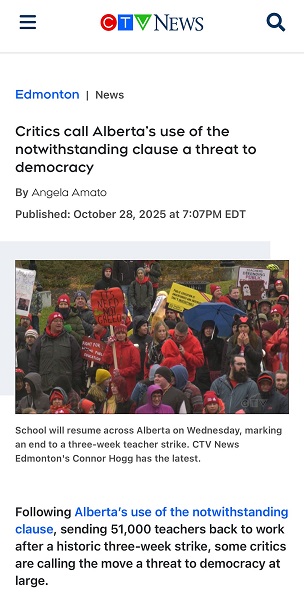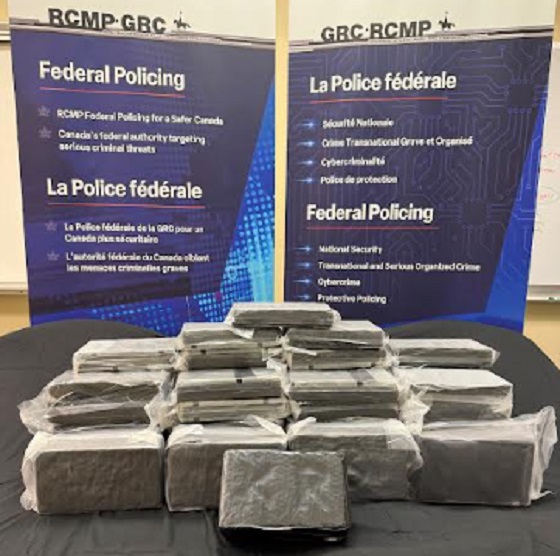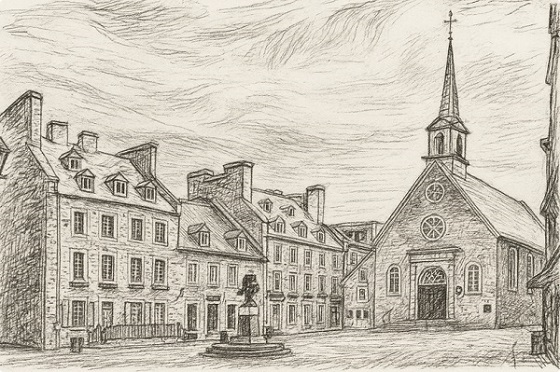Education
Renaming schools in Ontario—a waste of time and money

From the Fraser Institute
It appears that Toronto District School Board (TDSB) trustees have too much time on their hands. That’s the only logical explanation for their bizarre plan to rename three TDSB schools, which bear the names of Canada’s first prime minister, Sir John A. Macdonald, British politician Henry Dundas and Egerton Ryerson, founder of public education in Ontario.
According to a new TDSB report, the schools must be renamed because of the “potential impact that these names may have on students and staff based on colonial history, anti-indigenous racism, and their connection to systems of oppression.”
Now, it’s true that each of these men did things that fall short of 21st century standards (as did most 19th century politicians). However, they also made many positive contributions. Canada probably wouldn’t exist if John A. Macdonald hadn’t been involved in the constitutional conferences that led to Confederation. More than anyone else, he skillfully bridged the divide between British Protestants and French Catholics. But for a variety of assigned sins typical to a politician of his era, he must be cancelled.
Henry Dundas supported William Wilberforce’s efforts to abolish slavery throughout the British Empire, but believed a more moderate approach had a higher chance of success. As a result, he added the word “gradual” to Wilberforce’s abolition motion—an unforgivable offense according to today’s critics—even though the motion passed with a vote of 230-85 in the British House of Commons.
Egerton Ryerson played a key role in the founding of Ontario’s public education system and strongly pushed for free schools. He recognized the importance of providing an education to students from disadvantaged backgrounds, something that was unlikely to happen if parents couldn’t afford to send their children to school. And while Ryerson was not directly involved in creating Canada’s residential school system, his advocacy for a school system for Indigenous students has drawn the wrath of critics today.
Knowing these facts from centuries ago, it strains credulity that these three names would so traumatize students and staff that they must be scrubbed from school buildings. Despite their flaws, Macdonald, Dundas and Ryerson have achievements worth remembering. Instead of trying to erase Canadian history, the TDSB should educate students about it.
Unfortunately, that’s hard to do when Ontario teachers are given vague and confusing curriculum guides with limited Canadian history content. Instead of a content-rich approach that builds knowledge sequentially from year-to-year, Ontario’s curriculum guides focus on broad themes such as “cooperation and conflict” and jump from one historical era to another. No wonder there is such widespread ignorance about Canadian history.
On a more practical level, renaming schools costs money. Officials with the nearby Thames Valley District School Board, which is undergoing its own renaming process, estimate it costs at least $30,000 to $40,000 to rename a school. This is money that could be spent better on buying textbooks and providing other academic resources to students. And this price tag excludes the huge opportunity cost of the renaming process. It takes considerable staff time to create naming committees, conduct historical research, survey public opinion and write reports. Time spent on the school renaming process is time not being spent on more important educational initiatives.
Interestingly, the TDSB report that recommends renaming these three schools has six authors (all TDSB employees) with job titles ranging from “Associate Director, Learning Transformation and Equity” to “Associate Director, Modernization and Strategic Resource Alignment.” The word salad in these job titles tells us everything we need to know about the make-work nature of these positions. One wonders how many “Learning Transformation and Equity” directors the TDSB would need if it dropped its obsession with woke ideology and focused instead on academic basics. Given the significant decline in Ontario’s reading and math scores over the last 20 years, TDSB trustees—and trustees in other Ontario school boards—would do well to reexamine their priorities.
Egerton Ryerson probably never dreamed that the public school system he helped create would veer so far from its original course. Before rushing to scrub the names of Ryerson and his colleagues from school buildings, TDSB trustees should take a close look at what’s happening inside those buildings.
In the end, the quality of education students receive inside a school is much more important than the name on the building. Too bad TDSB trustees don’t realize that.
Alberta
Province orders School Boards to gather data on class sizes and complexity by Nov 24

Better data, better outcomes for Alberta students |
To help schools address classroom complexity, Alberta’s government will begin collecting annual data on class size and composition.
Over the past three years, Alberta has welcomed more than 80,000 new students. With this unprecedented growth, classroom complexity and class sizes are among the biggest issues facing schools and teachers across the province.
To meet this challenge head on, Alberta’s government will work with school boards to gather yearly data on class sizes and composition. This information will be used to better understand staffing, student needs and classroom complexity. School boards will be required to submit data on Alberta classrooms by Nov. 24, and by January, this data will be made publicly available and will then be released annually.
Data collected on classroom complexity will help the province understand and address issues in schools, including class sizes, and support strategic investments in classrooms. Over the next three years, school boards will be provided with funding to hire 3,000 teachers and 1,500 new education assistants to support students with complex needs.
“We are ready to work with school boards and teachers to address classroom complexity and class sizes. We have heard them loud and clear and we are taking bold action to address these issues.”
Alberta’s government is establishing a Class Size and Complexity Task Force to begin work immediately on identifying solutions to the challenges facing Alberta classrooms. Alongside new annual data collection, the task force will ensure every student gets the attention and support they need to succeed. Details about the task force will be shared in the coming weeks.
“This data will provide essential insight into classroom realities, guiding evidence-based decisions and advocating for sustainable funding to address complexity, ensuring every student and educator in Alberta has the support to thrive.”
Quick facts
To inform decisions on addressing classroom complexity, data will be collected on total numbers of:
- all staff, per school, including roles
- substitute teachers
- district staff, listed by job title
- students, per classroom, per school
- severe, mild/moderate, and gifted/talented students, per classroom, per school
- English as an additional language (EAL) students, per classroom, per school
- refugee students, per classroom, per school
- First Nations, Métis and Inuit students, per classroom, per school
- Individualized Program Plans, per classroom, per school
- students waitlisted for assessment, per classroom, per school
- incidents of aggression and violence
- $55 million was provided in Budget 2025 to address classroom complexity.
- 8.6 billion is being invested to build and renovate more than 130 schools across the province.
- Budget 2025 is investing $1.6 billion in learning support funding to help meet students’ specialized learning needs.
- Budget 2025 is investing $1.1 billion to hire more than 4,000 teachers and educational staff.
Alberta
How one major media torqued its coverage – in the take no prisoners words of a former Alberta premier

(Editor’s note: I was going to write on the media’s handling of the Alberta government’s decision to order striking teachers back to work and invoke Section 33 of the Charter in doing so. But former Alberta premier Jason Kenney provided such a fulsome dissection of an absence of balance and its consequences in terms of public trust on X that I asked him if The Rewrite could publish it. He said yes and here it is – Peter Menzies.)
By Jason Kenney
This ”story” is an object lesson for why trust in legacy media has plummeted, and alt right media audiences have grown.
”story” is an object lesson for why trust in legacy media has plummeted, and alt right media audiences have grown.
Here CTV “digital news producer” @AngeMAmato (she/her) writes a story about “experts” calling the use of Sec. 33 “a threat to democracy.”
Who are the experts?
A left wing academic, and a left wing activist. The latter, Howard Sapers, is a former Liberal MLA (which the article does not mention) for a party that is so marginal, it has not elected an MLA in over a decade.
For good measure CTV goes on to quote two left wing union bosses, who of course are predictably outraged.
A more accurate headline would be “Four people on the left angry about use of Notwithstanding Clause.” Which is the opposite of news. It’s the ultimate “Dog Bites Man” non-story.
Did the CTV producer make any effort to post a balanced story by asking for comment from academics / lawyers / think tanks who support use of Sec. 33? Did she call the @CDNConstFound or the @MLInstitute’s Judicial Power Project? Did she attempt to reach any of these four scholars, who just published their views in a @nationalpost op-ed last week?
Did she have an editor who asked why her story lacked any attempt at balance?
And did anyone at CTV pause for a moment to ponder how tendentious it is to accuse a democratically elected legislature of acting “undemocratically” by invoking a power whose entire purpose is to ensure democratic accountability?
She provides some historical context about prior use of Sec. 33. Why does that context not include the fact that most democratically elected provincial governments (including Alberta under Premier Lougheed, and Saskatchewan under NDP Premier Blakeney) agreed to adopt the Charter *only if* it included the Notwithstanding Clause to allow democratically elected Legislatures to ensure a democratic check and balance against the abuse of undemocratic, unaccountable judicial power?
Why does she not mention that for the first 33 years of the Charter era, the Canadian Courts ruled that there was no constitutionally protected right to strike?
Why doesn’t she quote an expert pointing out that Allan Blakeney defended the Saskatchewan Legislature’s 1986 use of Sec. 33 to end a strike as “a legitimate use of the Clause?” Or refer to Peter Lougheed’s 1987 commitment to use Sec. 33 if the courts invented a right to strike?
Many thoughtful criticisms can be levelled against Section 33. Being undemocratic is not one of them.
So why do we see so much agitprop like this masquerading as news from so many legacy media outlets?
IMO, there are two possible answers:
1) They are blind to their own biases; and / or
2) People like @AngeMAmato believe that they have a moral imperative to be “progressive journalists” which trumps the boringly old fashioned professional imperative to be objective and balanced.
Whatever the reason, “journalists” like this have no one to blame but themselves for growing distrust of legacy media, and the consequent emergence of non traditional media platforms.
 |
|
Invite your friends and earn rewards
-

 Alberta16 hours ago
Alberta16 hours agoFrom Underdog to Top Broodmare
-

 International1 day ago
International1 day agoPrince Andrew banished from the British monarchy
-

 Business1 day ago
Business1 day ago“We have a deal”: Trump, Xi strike breakthrough on trade and fentanyl
-

 Alberta1 day ago
Alberta1 day agoProvince orders School Boards to gather data on class sizes and complexity by Nov 24
-

 Business2 days ago
Business2 days agoCanada’s attack on religious charities makes no fiscal sense
-

 Bruce Dowbiggin2 days ago
Bruce Dowbiggin2 days agoGet Ready: Your House May Not Be Yours Much Longer
-

 Crime1 day ago
Crime1 day agoCanada Seizes 4,300 Litres of Chinese Drug Precursors Amid Trump’s Tariff Pressure Over Fentanyl Flows
-

 National1 day ago
National1 day agoWatchdog Presses Ottawa to Release Hidden Lobbying Rulings









